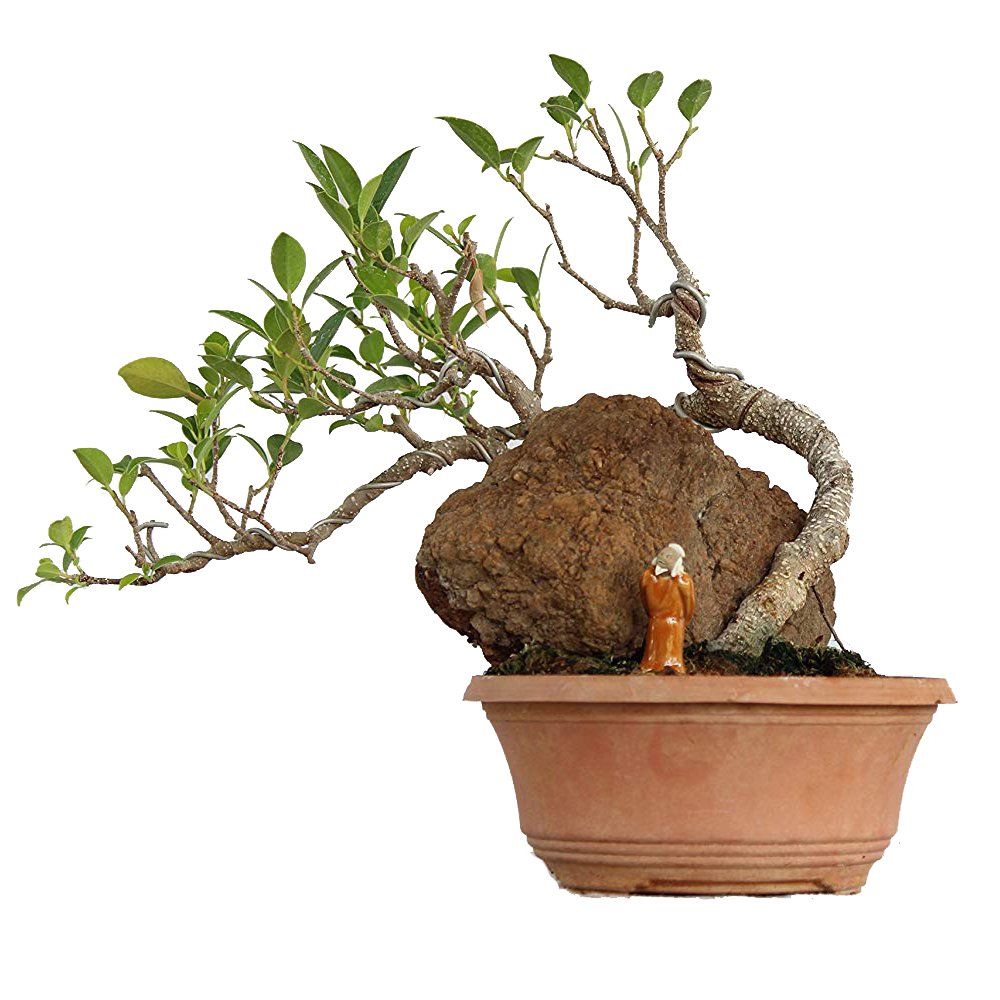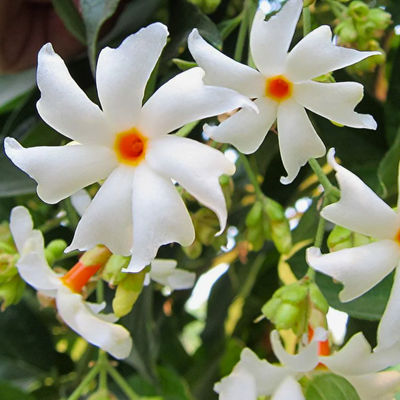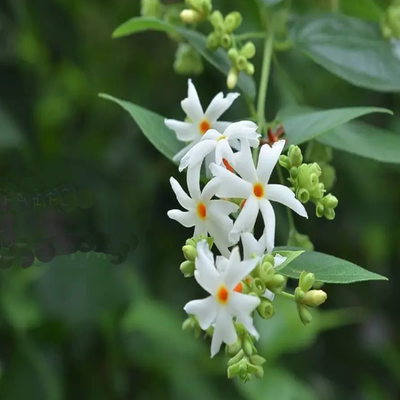
Bonsai Microcarpa Ficus Indoor Live Bonsai Plant
Guaranteed Safe Checkout
Green Paradise Offers Bonsai Ficus
Microcarpa (Tigerbark) Plant
About Bonsai Ficus Microcarpa Tigerbark Plant
The Bonsai Ficus Microcarpa (Tigerbark), also known as Tigerbark Fig or Tigerbark Ficus, is a popular bonsai tree variety that belongs to the Ficus genus. It is a cultivar of the species Ficus microcarpa, native to Southeast Asia, including China, Malaysia, and Taiwan.
The Tigerbark Ficus is cherished for its unique, distinctive bark, which features mottled patterns resembling tiger stripes, hence its name. The bark is smooth and typically displays a mix of light and dark brown colors, providing a captivating visual appeal to the tree.
In terms of its overall appearance, the Tigerbark Ficus exhibits a compact growth habit with small, glossy leaves. The leaves are dark green in color, oval-shaped, and can develop a slightly reddish tint when exposed to bright light. The tree's size can vary depending on how it is pruned and trained, but it generally reaches a height of around 10 to 18 inches (25 to 45 cm) when cultivated as a bonsai.
Cultivating a Bonsai Ficus Microcarpa Tigerbark requires specific care to ensure its health and aesthetic appeal. Here are some key considerations:
Lighting:
-
Tigerbark Ficus bonsai thrives in bright, indirect light.
-
Place it near a window where it can receive sufficient sunlight, but avoid exposing it to direct, intense sunlight, as it may scorch the leaves.
Temperature and Humidity:
-
The ideal temperature range for the Tigerbark Ficus is between 60°F and 75°F (15°C and 24°C).
-
It prefers moderate to high humidity levels, so misting the leaves regularly or placing the tree on a humidity tray can be beneficial.
Watering:
-
Water the bonsai thoroughly when the soil surface feels slightly dry to the touch, but avoid overwatering.
-
Ensure proper drainage to help doused roots.
Pruning and Shaping:
-
Regular pruning and shaping are necessary to maintain the bonsai's compact form.
-
Trim back new growth to retain the desired shape and remove any dead or unhealthy branches.
Fertilization:
-
Use a balanced, water-soluble fertilizer during the growing season (spring and summer) to provide essential nutrients.
-
Follow the instructions on the toxin package for proper operation.
Repotting:
-
As the Tigerbark Ficus grows, it will require repotting every two to three years to provide fresh soil and promote healthy root development.
-
Repotting is typically best done in the spring.
With proper care, the Bonsai Ficus Microcarpa Tigerbark can thrive and develop into a captivating and aesthetically pleasing miniature tree. Its unique bark and compact growth habit make it a popular choice among bonsai enthusiasts.
How To Grow Bonsai Ficus Microcarpa Tigerbark
Growing a bonsai Ficus macrocarpa Tigerbark plant (also known as Tigerbark fig or Chinese banyan) requires careful attention and patience.
Listed below is a step-by-step guide to get you started:
Select a healthy specimen:
-
Choose a young Ficus macrocarpa Tigerbark plant with a well-developed trunk and healthy foliage.
-
Look for a plant with an interesting shape or unique features that will enhance its bonsai appearance.
Choose the right container:
-
Bonsai containers should be shallow and have drainage holes to prevent waterlogging.
-
Select a container that is appropriate for the size of your tree and allows for root growth.
-
Additionally, consider using a bonsai potting mix that provides good drainage while retaining some moisture.
Prune and shape the tree:
-
Use sharp and clean bonsai pruning shears to trim the branches and foliage of your Tigerbark plant.
-
Bonsai pruning is an ongoing process to maintain the desired shape and size.
-
Remove any unwanted branches, especially those that disrupt the overall balance and aesthetic appeal of the tree.
-
Aim to create an open and balanced structure with visible branches.
Wiring:
-
Wiring helps you shape and train the branches of your bonsai.
-
Carefully wrap aluminum or copper wire around the branches, bending them gently into the desired position.
-
Be cautious not to damage the bark or branches while wiring.
-
After a few months, the branches will hold their shape, and you can remove the wire.
Repotting:
-
Bonsai plants need to be repotted periodically to prevent root congestion.
-
Report your Ficus macrocarpa Tigerbark every two to three years, preferably during spring.
-
Prune back some of the roots and replace the soil to provide fresh nutrients.
Watering and humidity:
-
Bonsai trees have specific watering needs.
-
Water your Tigerbark bonsai when the top inch of the soil feels dry.
-
Refrain from overwatering to prevent root rot.
-
Maintain a consistent level of humidity by misting the foliage regularly, especially in drier environments or during winter when indoor heating can cause dryness.
Sunlight and temperature:
-
Ficus microcarpa Tigerbark thrives in bright, indirect light.
-
Place your bonsai where it can receive several hours of sunlight each day.
-
However, avoid exposing it to intense midday sun, as it can scorch the leaves.
-
The ideal temperature range for this plant is between 65°F to 85°F (18°C to 29°C).
Fertilization:
-
Feed your bonsai with a balanced, water-soluble fertilizer during the growing season (spring and summer) to promote healthy growth.
-
Follow the manufacturer's instructions for dosage and frequency.
-
Reduce or cease fertilization during winter when the plant is dormant.
Pest control:
-
Keep a close eye on your bonsai for common pests such as aphids, spider mites, and scale insects.
-
Treat any infestations promptly with organic or chemical pest control methods, depending on your preference.
Patience and care:
-
Bonsai's cultivation requires patience and attention to detail.
-
Regularly observe your Ficus macrocarpa Tigerbark plant, adjusting your care routine as needed.
-
As your bonsai tree grows, adapt its shape and style to create a unique and visually appealing specimen.
Remember, bonsai cultivation is an art form that requires practice and experimentation. Enjoy the process and don't be afraid to make mistakes—learning from them is an essential part of becoming a skilled bonsai enthusiast.


















